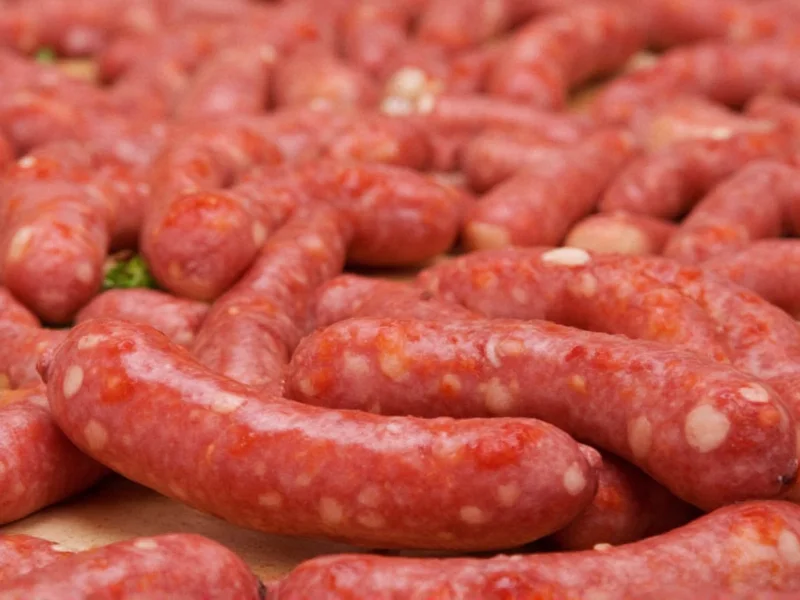Understanding the caloric content of sausage is essential for anyone tracking their nutritional intake. Whether you're managing weight, following a specific diet, or simply making informed food choices, knowing how many calories is in sausage helps you maintain dietary balance. This guide provides accurate, science-based information about sausage calories across various types and preparations.
Factors That Affect Sausage Calorie Count
The calorie content in sausage isn't uniform—it changes based on several key factors:
- Meat composition: Higher fat content means more calories (fat contains 9 calories per gram versus 4 for protein)
- Sausage type: Breakfast links, Italian, bratwurst, and chorizo all have different nutritional profiles
- Preparation method: Cooking techniques affect final calorie count as fat renders out
- Additives: Fillers, breadcrumbs, and other ingredients alter nutritional values
- Serving size: Always check portion sizes when comparing calories in pork sausage per link versus per 100g
Calorie Comparison Across Popular Sausage Types
| Sausage Type | Typical Serving Size | Calories | Key Nutritional Notes |
|---|---|---|---|
| Pork breakfast link | 1 link (56g) | 150-220 | High in saturated fat; varies by lean/fat ratio |
| Turkey sausage | 1 link (56g) | 90-140 | Generally lower fat than pork options |
| Italian sausage | 1 link (85g) | 250-320 | Often contains cheese and higher fat content |
| Bratwurst | 1 sausage (85g) | 280-350 | Higher calorie count due to larger serving size |
| Chorizo | 28g (1 oz) | 110-150 | Very high fat content; often measured in smaller portions |
| Veggie sausage | 1 link (56g) | 70-120 | Plant-based alternatives typically lowest in calories |
Understanding Sausage Nutrition Beyond Calories
When evaluating how many calories is in sausage, consider these additional nutritional factors:
Protein content typically ranges from 6-14g per serving, making sausage a decent protein source. However, most traditional sausages are high in saturated fat (8-15g per serving) and sodium (300-600mg). Processed meats like sausage contain preservatives such as sodium nitrate, which some studies link to health concerns when consumed regularly.
The cooking method significantly impacts final calorie content. Grilling or baking allows fat to drip away, potentially reducing calories by 20-30% compared to pan-frying where sausage cooks in its own fat. Always drain excess fat after cooking to minimize unnecessary calories.
Practical Tips for Managing Sausage Calories
If you're monitoring your intake, consider these strategies:
- Choose leaner varieties like chicken or turkey sausage when tracking calories in breakfast sausage
- Measure portions carefully—many people underestimate serving sizes
- Look for "reduced fat" options, but check labels as some compensate with fillers
- Pair sausage with vegetables to create balanced meals that satisfy with fewer calories
- Consider plant-based alternatives for significantly lower calories in sausage per 100g
For those following specific dietary plans, understanding calories in cooked sausage vs raw matters. Cooking typically reduces weight through fat loss but concentrates remaining nutrients. A 4oz raw sausage might yield 3oz cooked, with slightly fewer total calories but higher calories per ounce.
How Sausage Fits Into Daily Nutrition
For an average adult on a 2,000-calorie diet, a single sausage link represents 7.5-11% of daily calories. While sausage can be part of a balanced diet, nutritionists generally recommend limiting processed meats. The American Heart Association suggests choosing lean protein sources most days and treating higher-calorie sausages as occasional indulgences rather than dietary staples.
When comparing calories in italian sausage vs bratwurst, remember that bratwurst typically contains more calories per serving due to larger standard portions, though the calorie density (calories per gram) might be similar. Always check specific product labels as formulations vary widely between brands.











 浙公网安备
33010002000092号
浙公网安备
33010002000092号 浙B2-20120091-4
浙B2-20120091-4